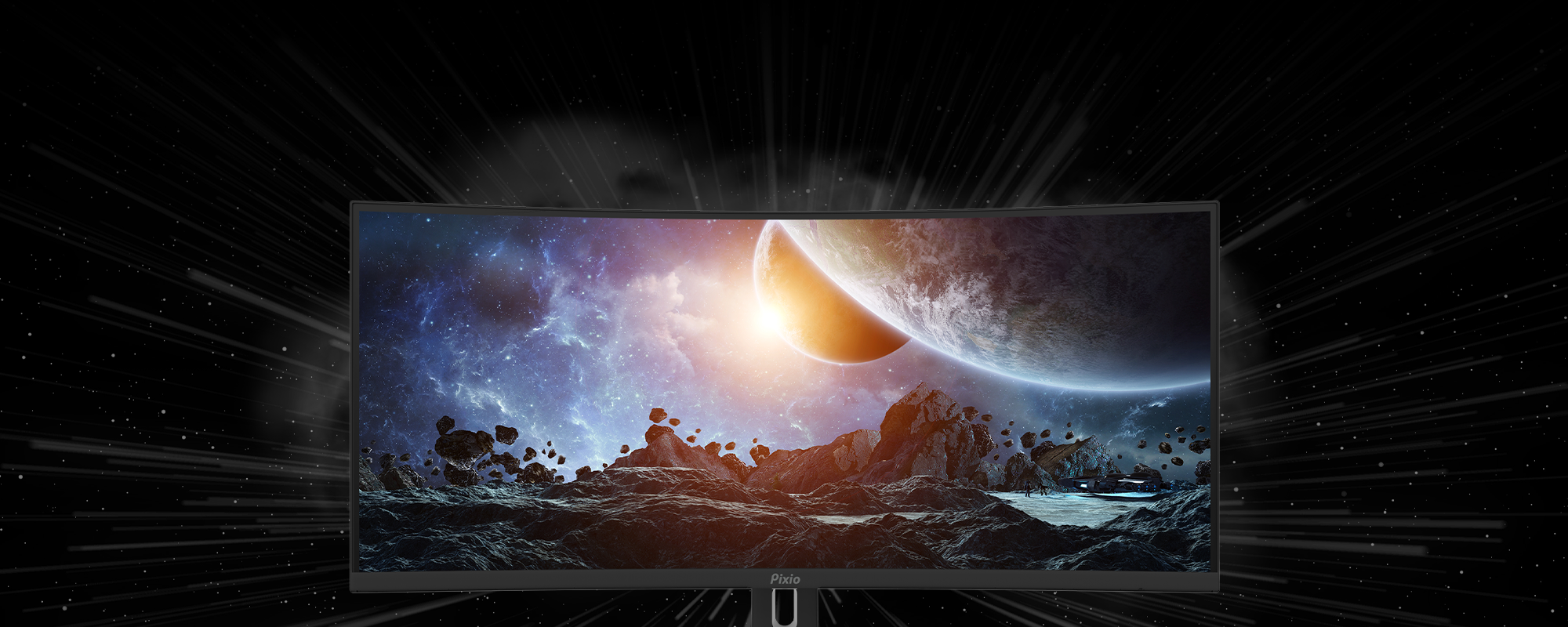Monitors are the windows to our digital world, and choosing the right one can significantly impact user experience. Two main monitor types dominate the market: flat and curved. Both offer distinct advantages and cater to different user preferences. We will explain the key differences between flat and curved monitors, and help you make an informed decision for your work, gaming, or entertainment setup.
Flat Monitors
Flat monitors have been the industry standard for decades. They offer a familiar viewing experience with a non-curved panel. Here's a breakdown of their key characteristics:
- Pros:
- Budget-friendly: Flat monitors are generally cheaper than their curved counterparts, making them budget-friendly.
- Wider compatibility: Flat monitors work seamlessly with all types of computers and devices without compatibility issues.
- Versatility: They are suitable for various tasks, including work, browsing, and gaming.
- Multiple size options: Flat monitors come in a wide range of sizes, from compact 16 inches to expansive 49 inches, catering to diverse needs.
- Cons:
- Limited viewing angles: The viewing quality can deteriorate slightly from off-center angles, especially on larger screens.
- Less immersive experience: Flat panels don't offer the same level of immersion as curved monitors, particularly for gaming or watching movies.
- Eye strain: For extended use, especially on larger screens, users might experience eye strain due to the constant need to shift their gaze across the flat surface.

PX277 Prime Neo gaming monitor
Curved Monitors
Curved monitors have become increasingly popular in recent years, offering a unique viewing experience that mimics the natural curve of the human eye. Here's a look at their key features:
- Pros:
- Immersive viewing: Curved monitors create a more immersive experience, especially for gaming and watching movies. The curved design surrounds your field of view, making you feel more involved in the on-screen action.
- Improved viewing angles: They offer wider viewing angles compared to flat panels, ensuring consistent image quality from almost any angle.
- Cons:
- Higher cost: Curved monitors generally come at a premium compared to flat monitors of similar size and specifications.
- Compatibility concerns: Some older graphics cards or software might not be optimized for curved displays, potentially leading to distortion or compatibility issues.
- Limited size options: Curved monitors are often available in a smaller selection of sizes compared to flat monitors, particularly in the budget-friendly range.
- Text clarity: Curved monitors can cause slight text distortion on the edges, especially on productivity-focused tasks that involve reading.

PXC348C gaming monitor
Making the Right Choice: Flat vs. Curved Monitors
The ideal monitor type depends on your individual needs and preferences. Here are some factors to consider when making your decision:
- Primary Usage:
- Flat monitors: Ideal for everyday tasks like browsing, productivity work, and gaming.
- Curved monitors: Excellent for gaming and watching movies, where an immersive experience is beneficial.
- Budget: Flat monitors are generally more affordable, whereas curved monitors usually come at a premium.
- Viewing Distance: If you sit close to the screen, a curved monitor might be more comfortable for your eyes because the screen curvature better aligns with the cone of vision.
Ultimately, the best way to choose is to try both monitor types in person. Pay attention to how the viewing experience feels for your eyes and whether the curved design offers a noticeable benefit for your preferred tasks.
Both flat and curved monitors have their advantages and disadvantages. By understanding the key differences and considering your specific needs, you can make an informed decision and select the monitor that best suits your experience!

0 comments